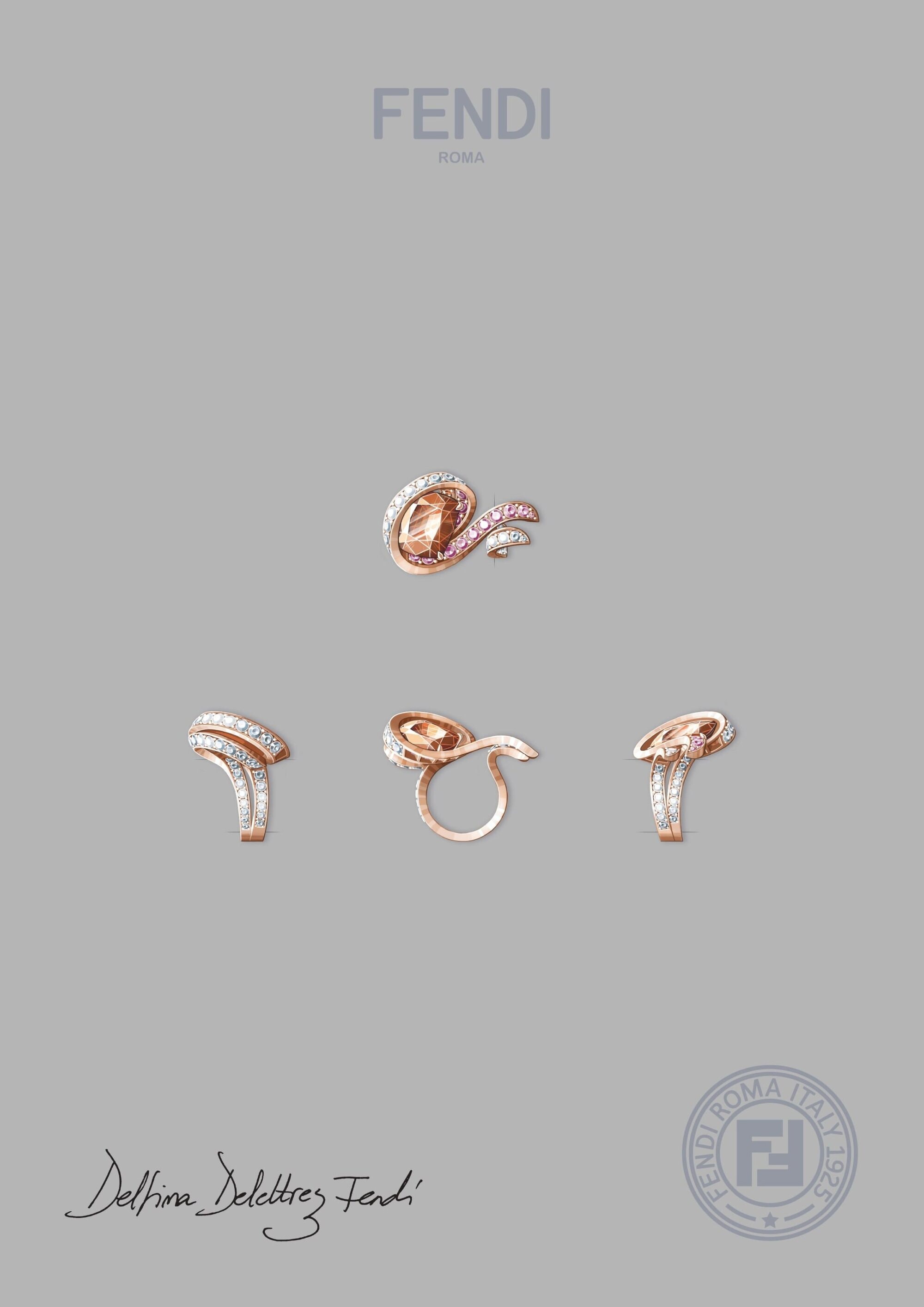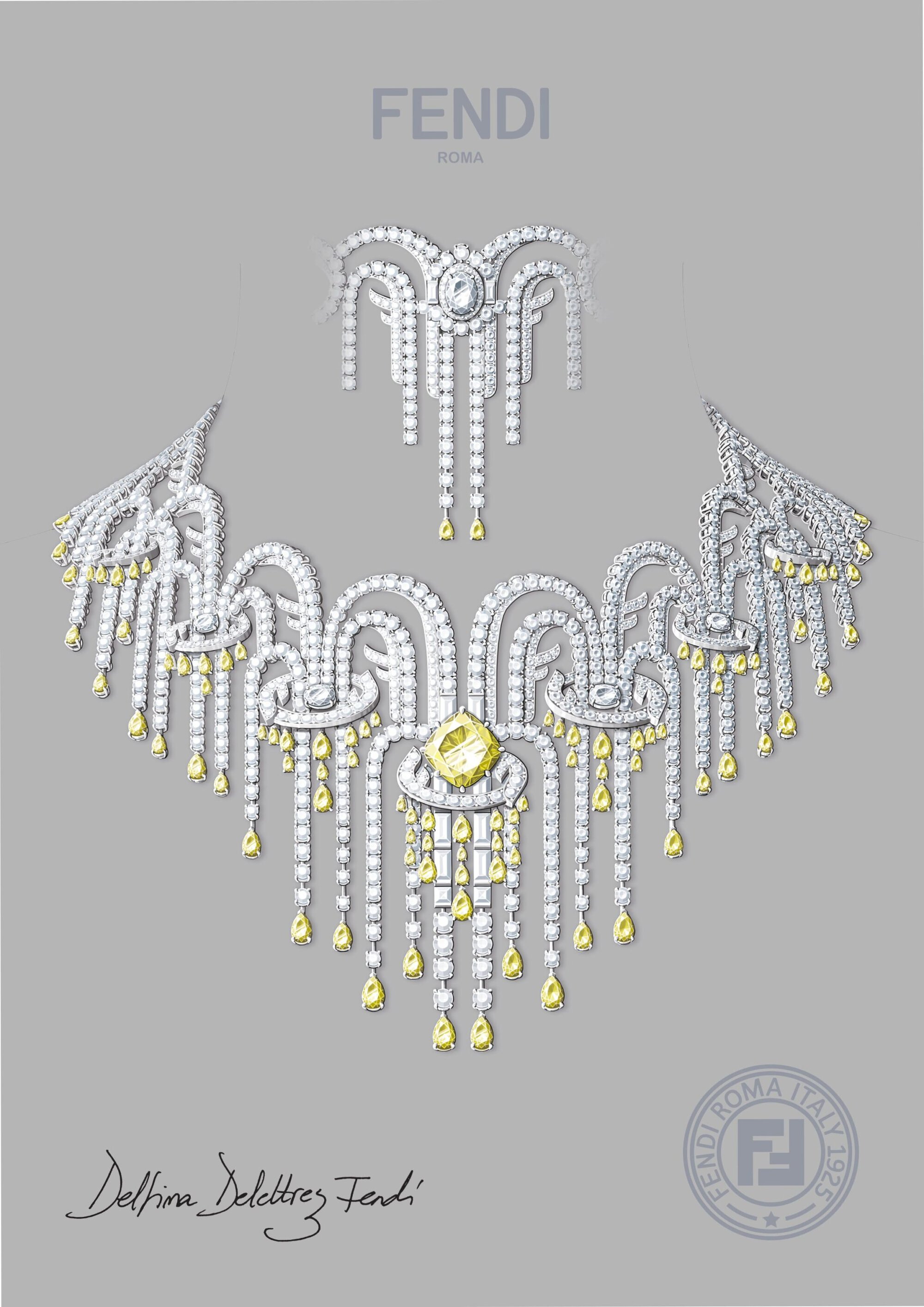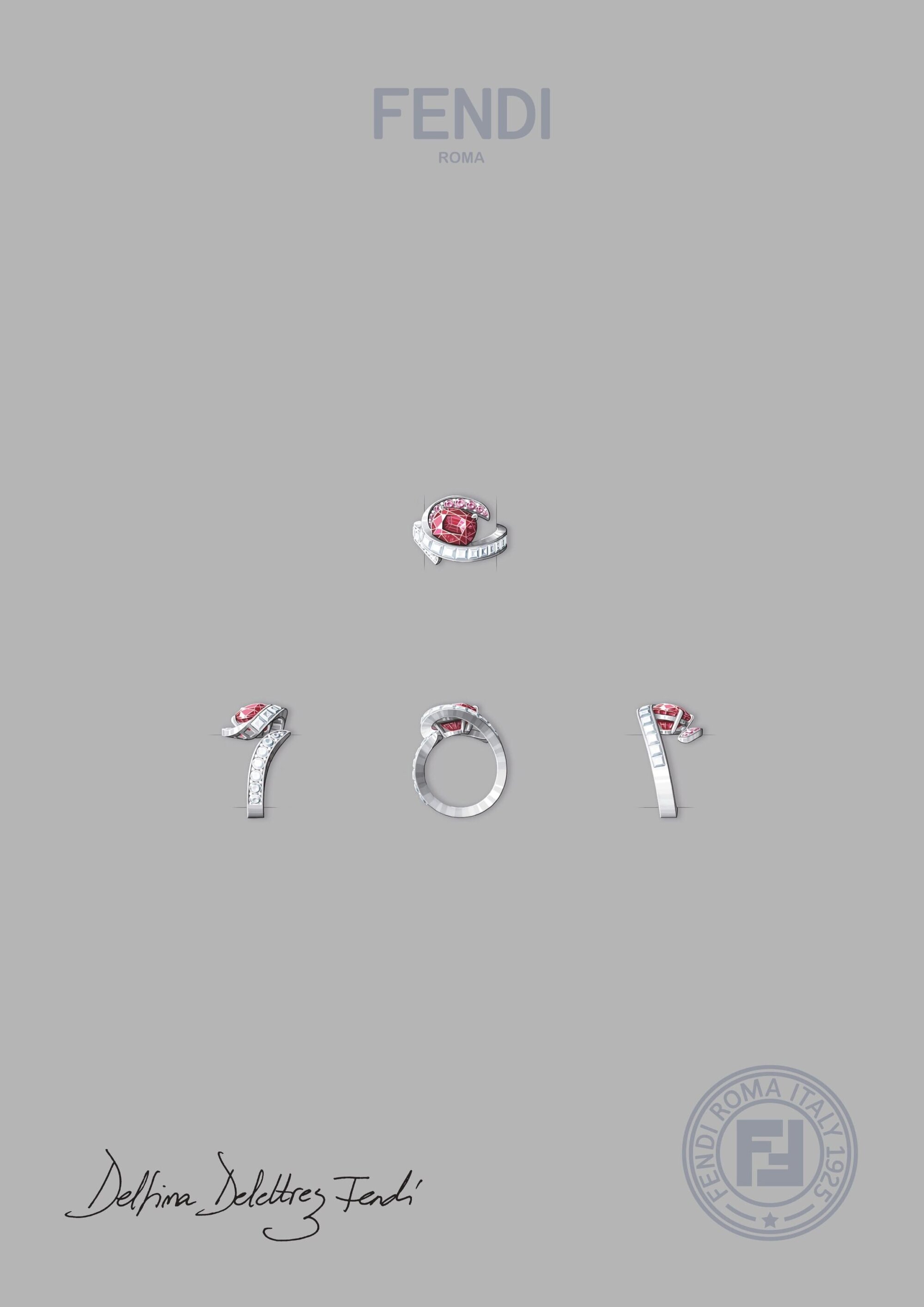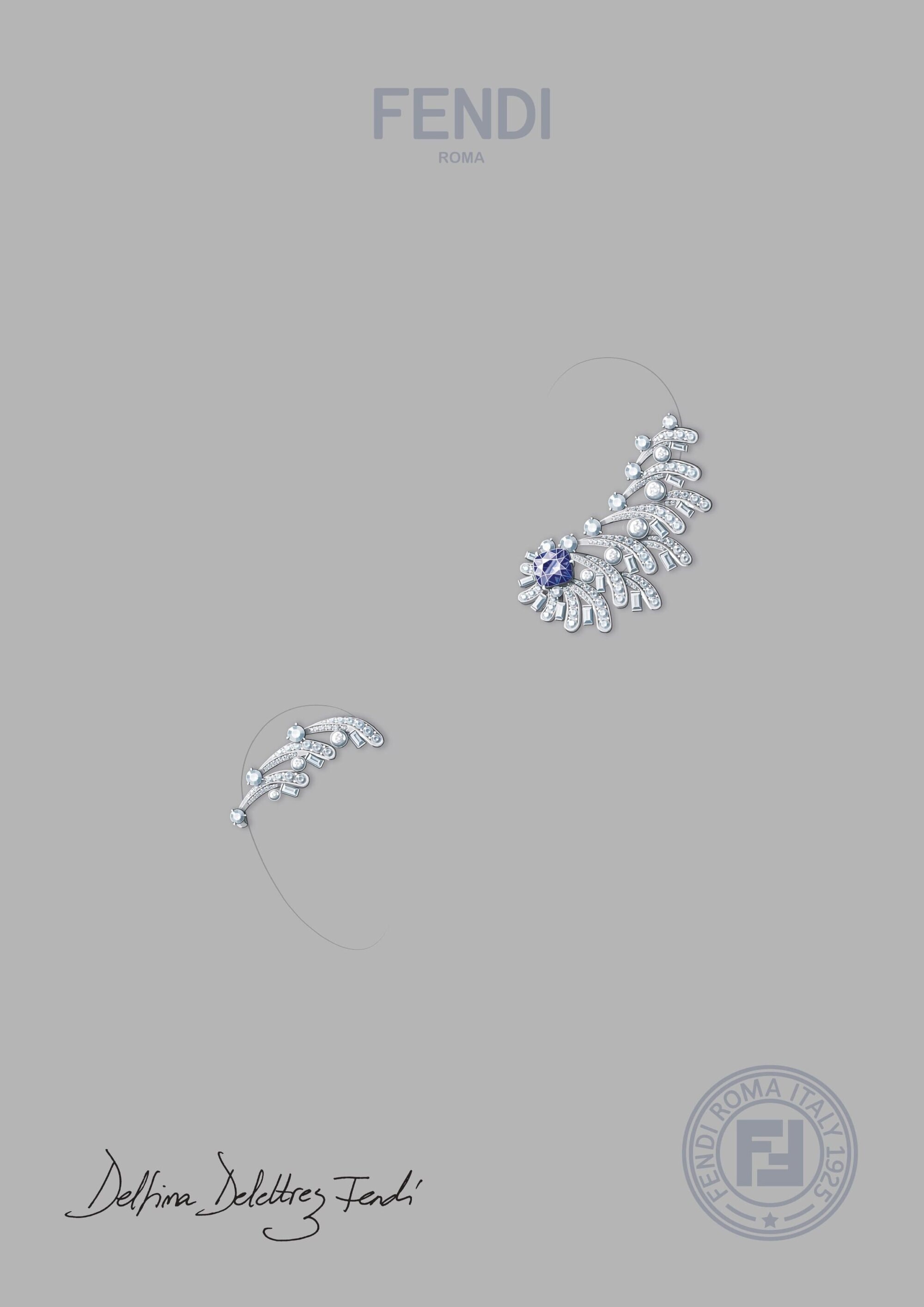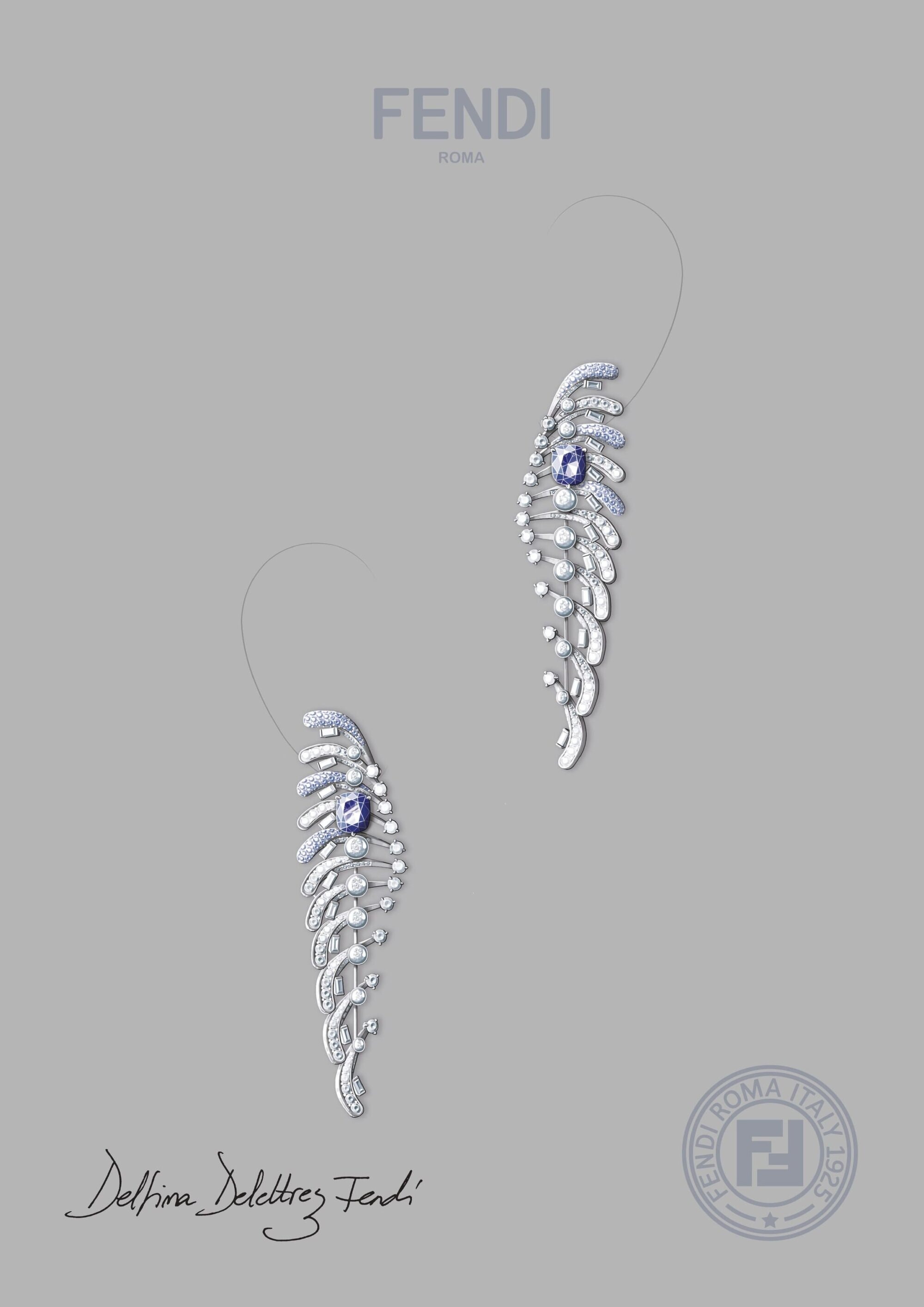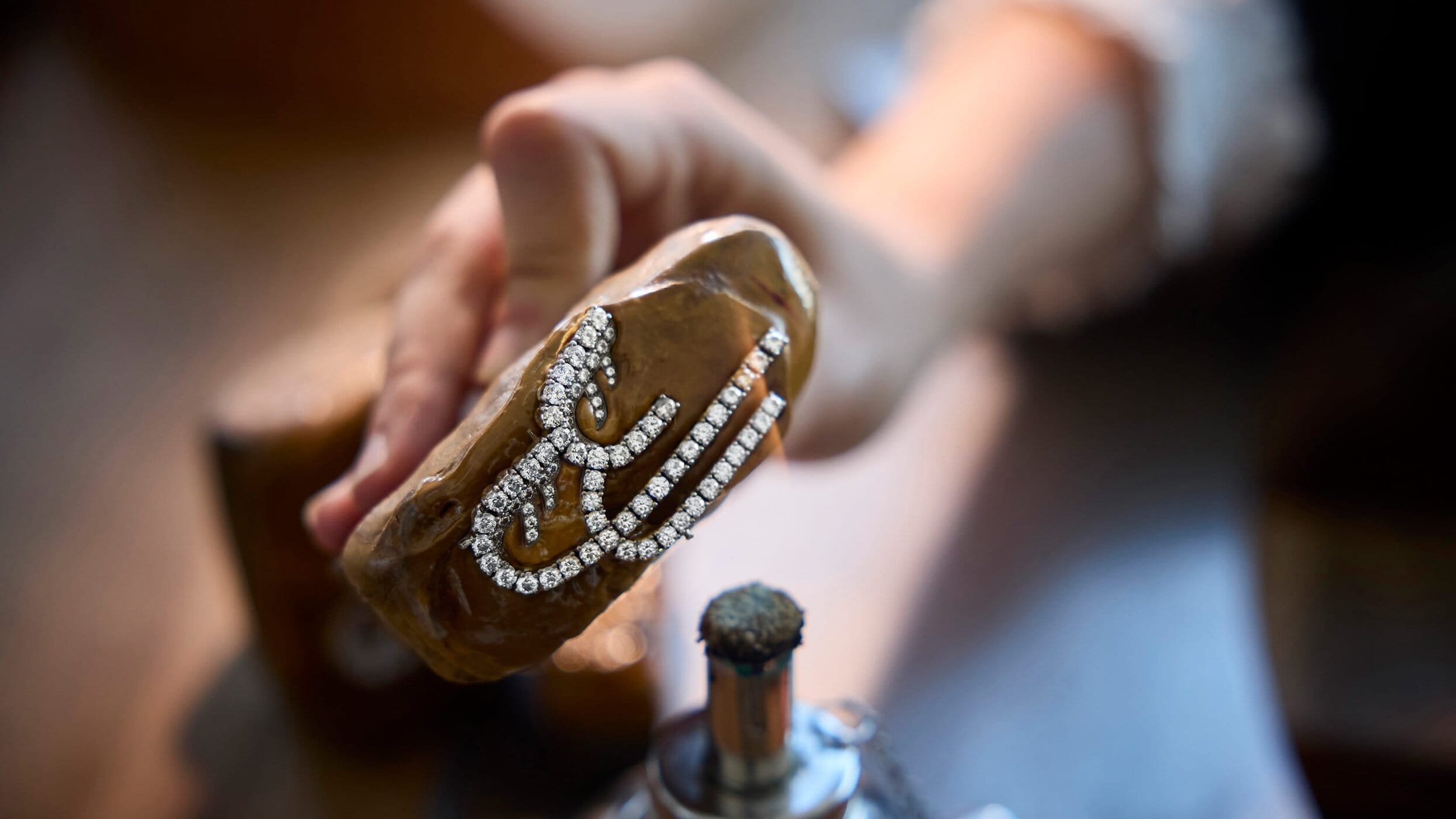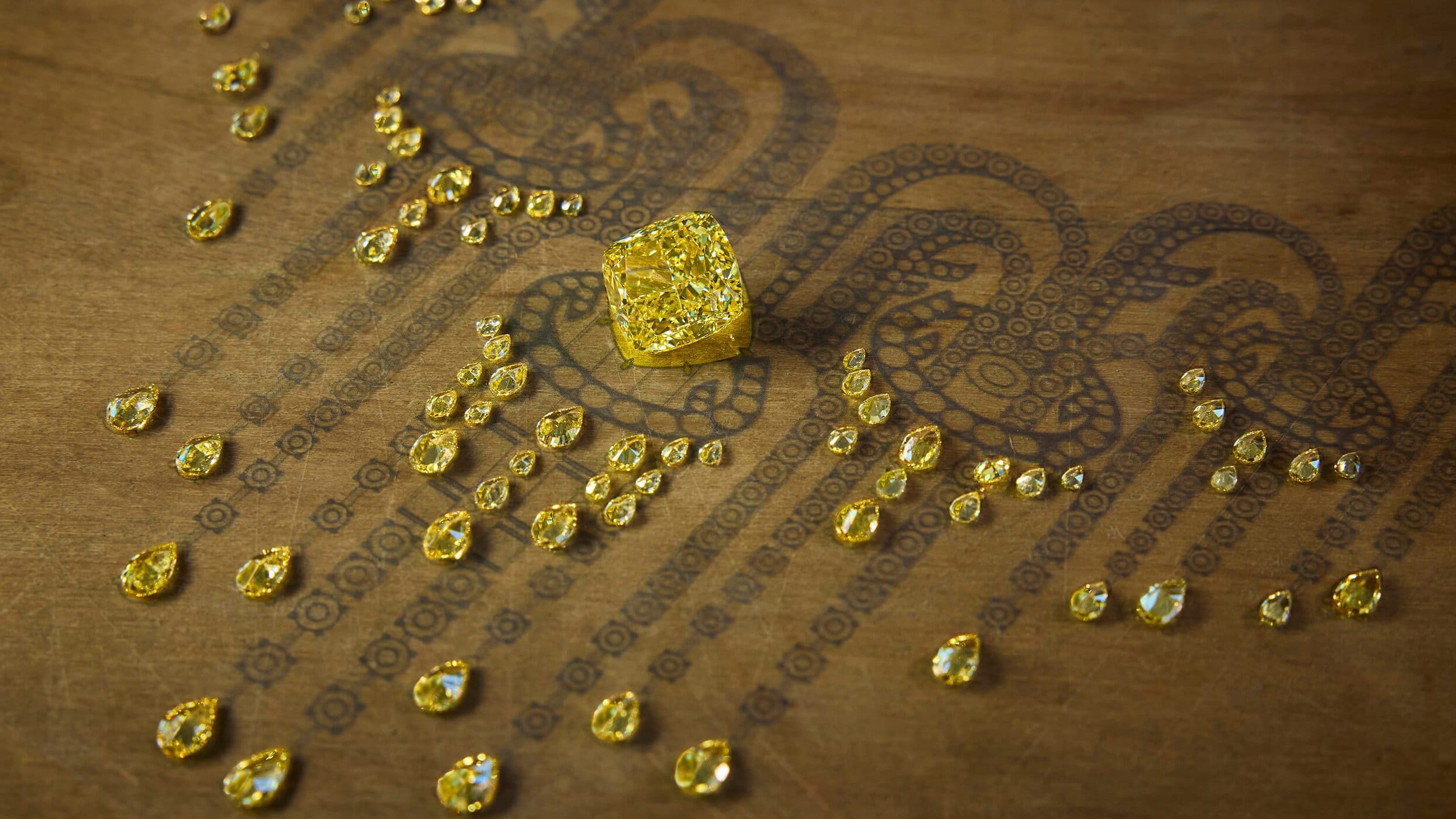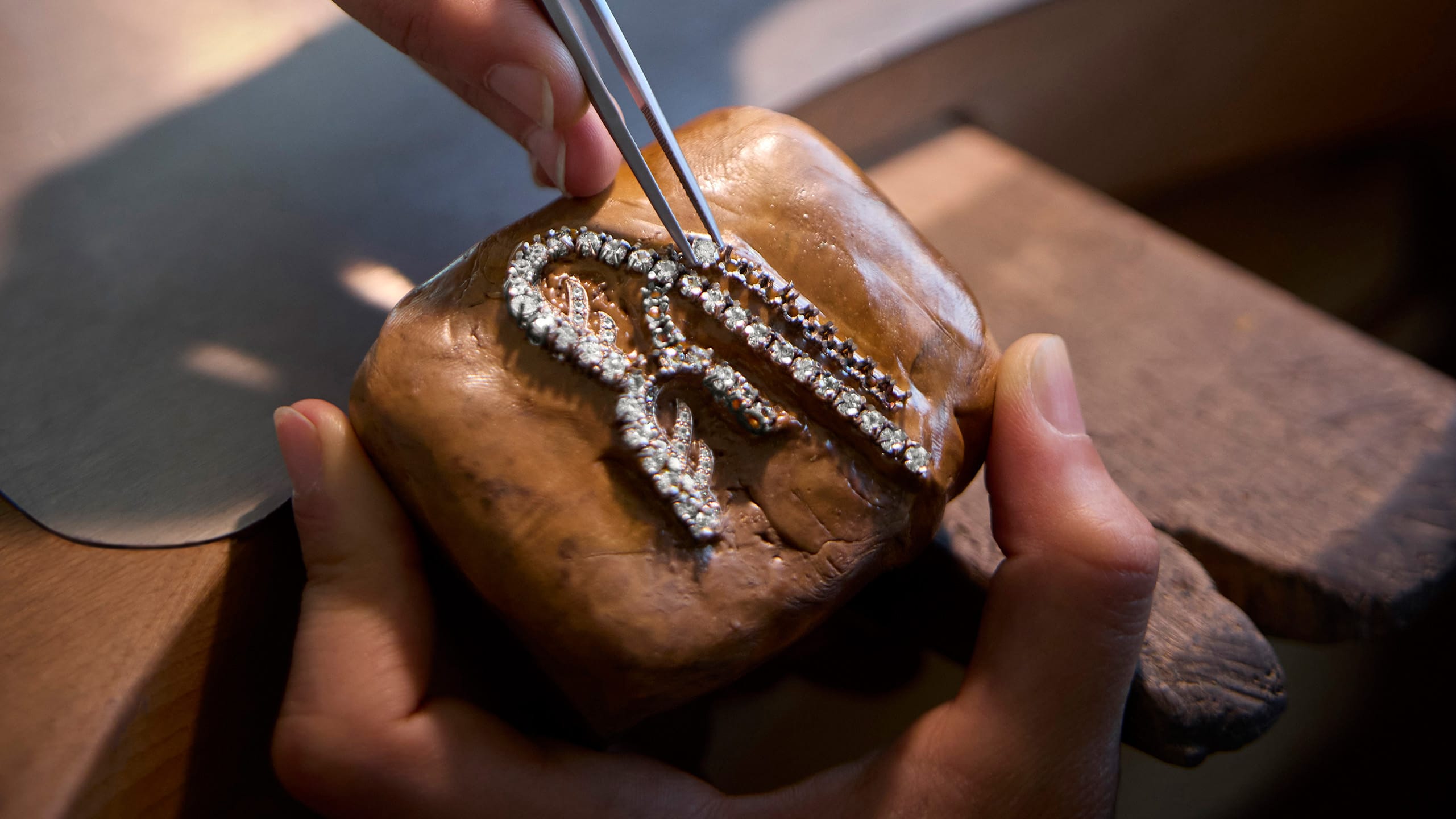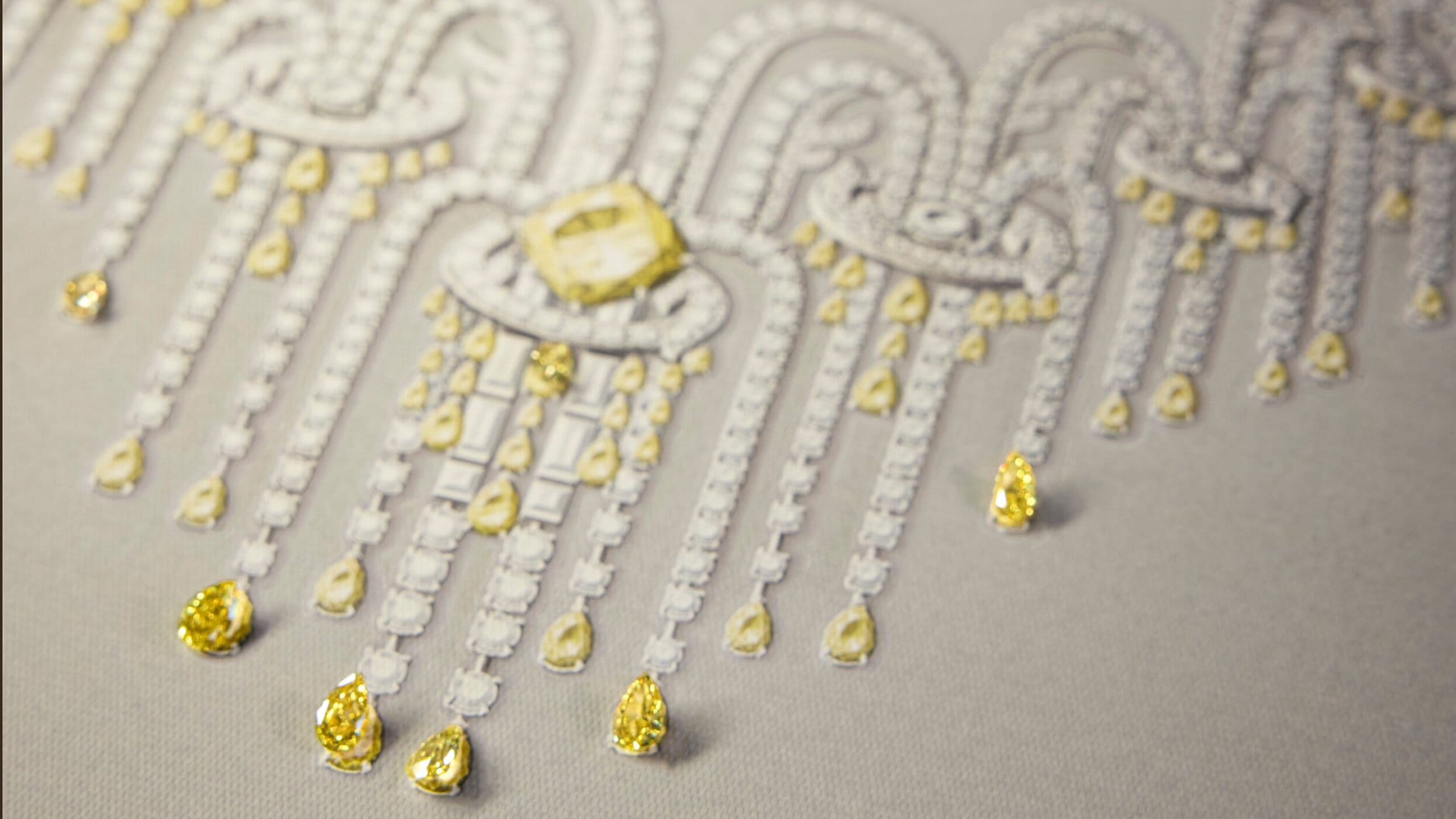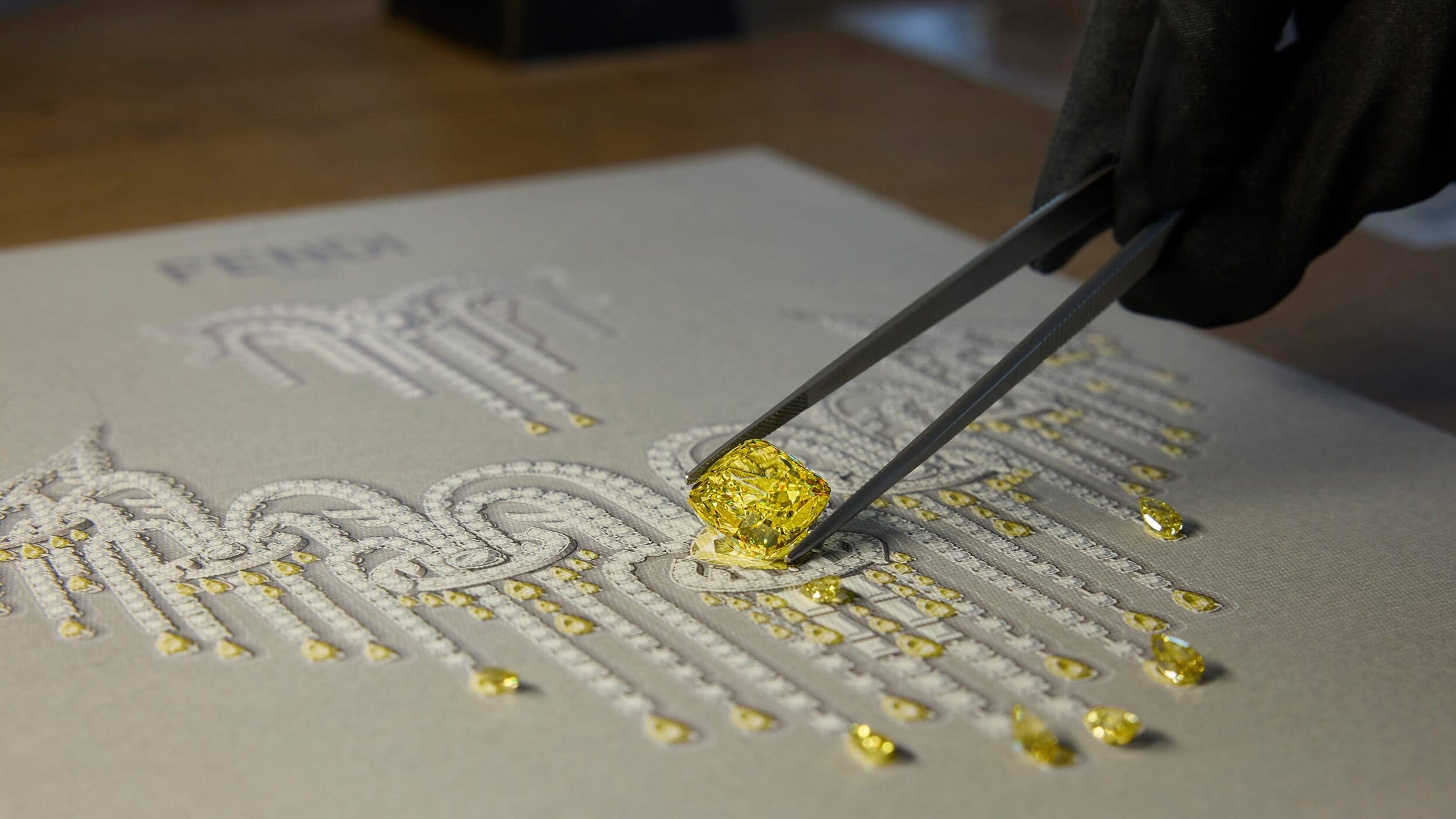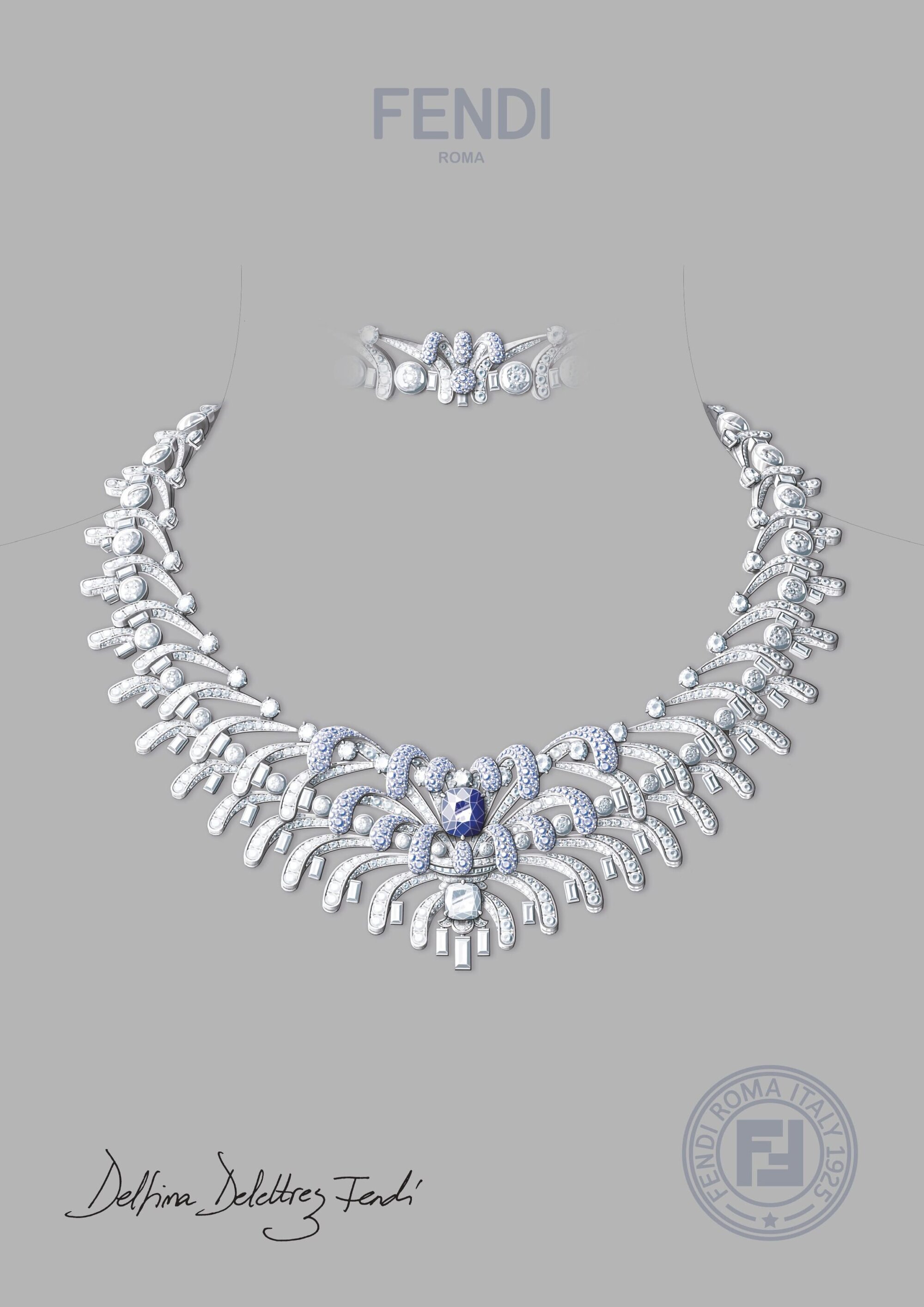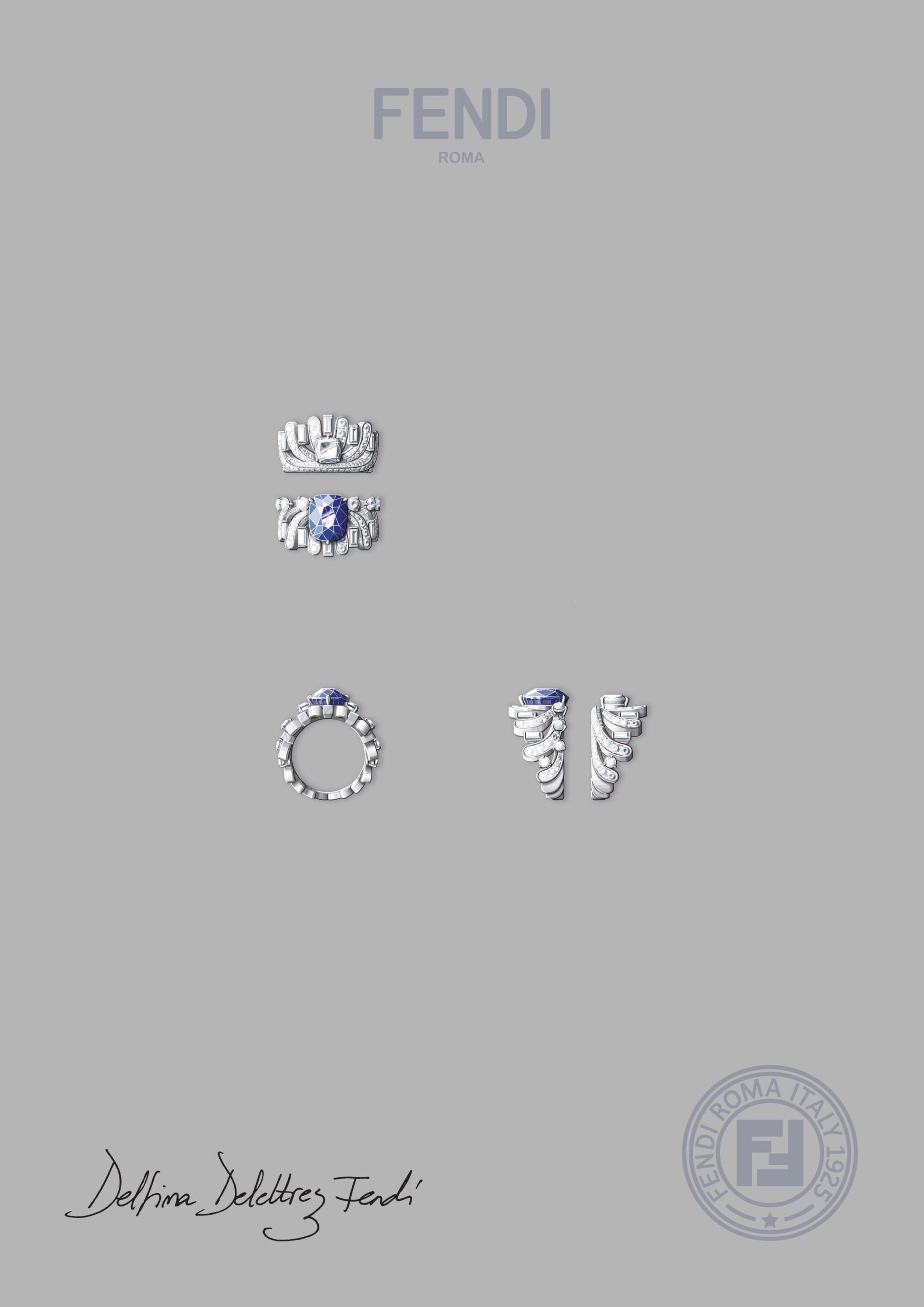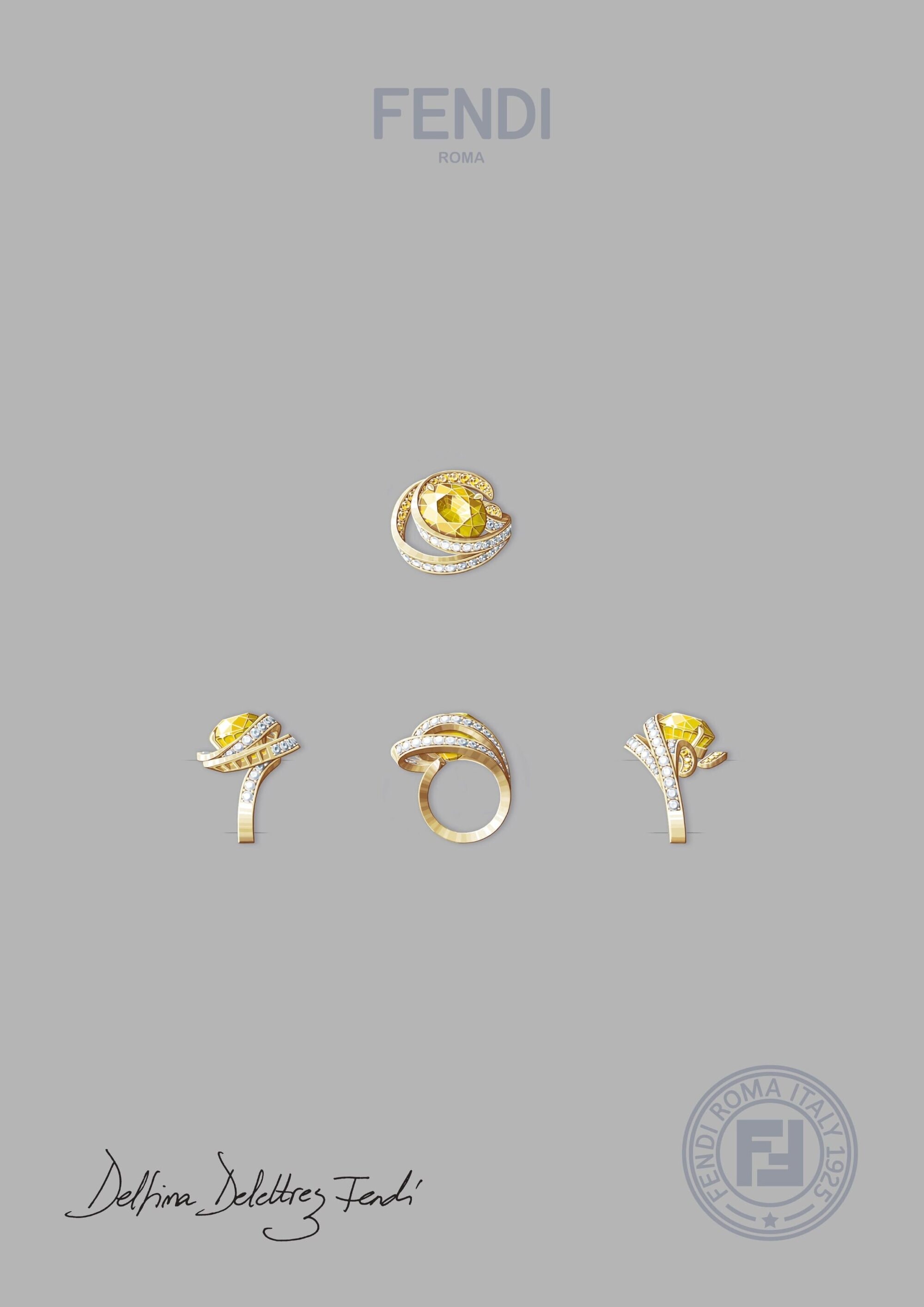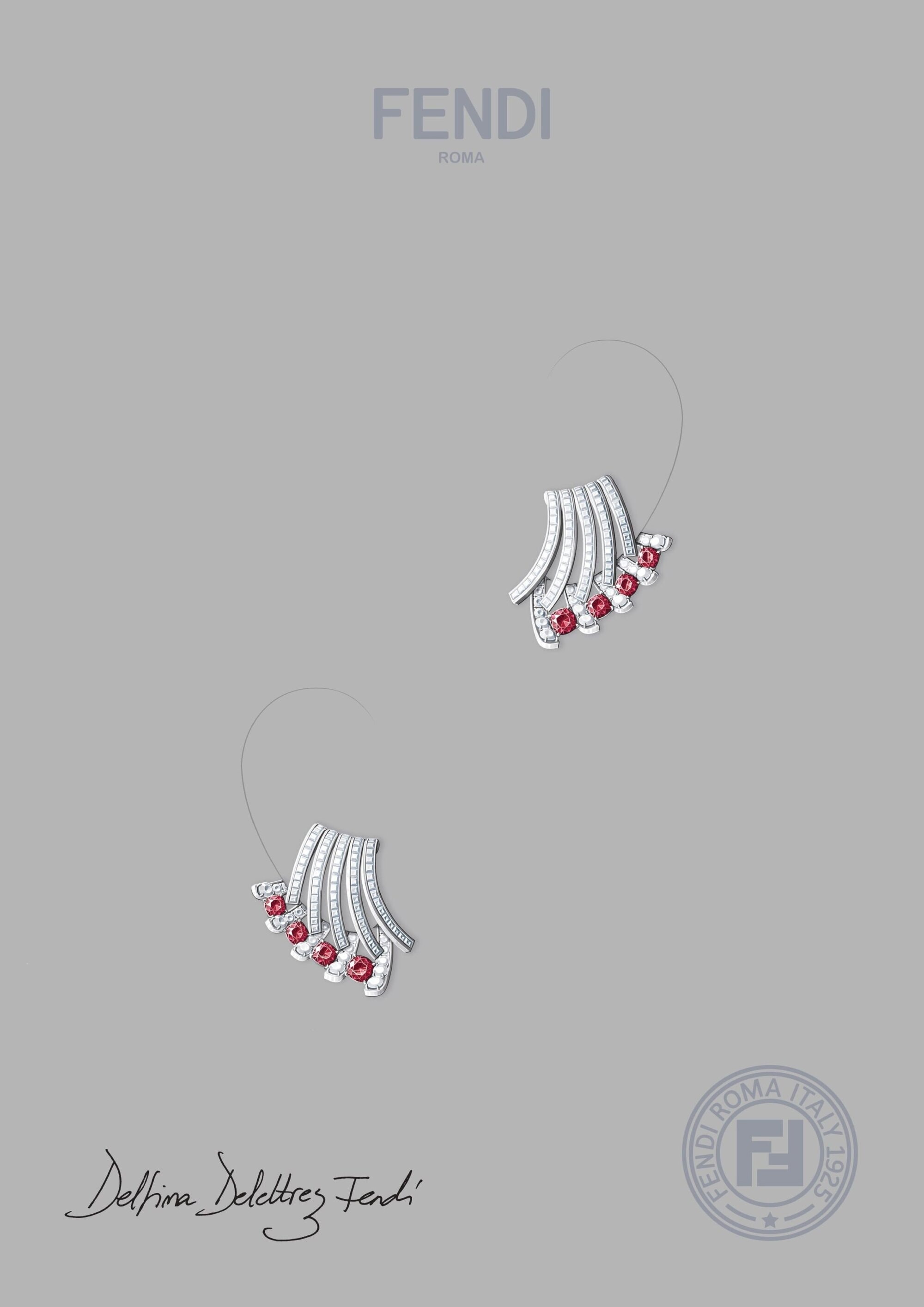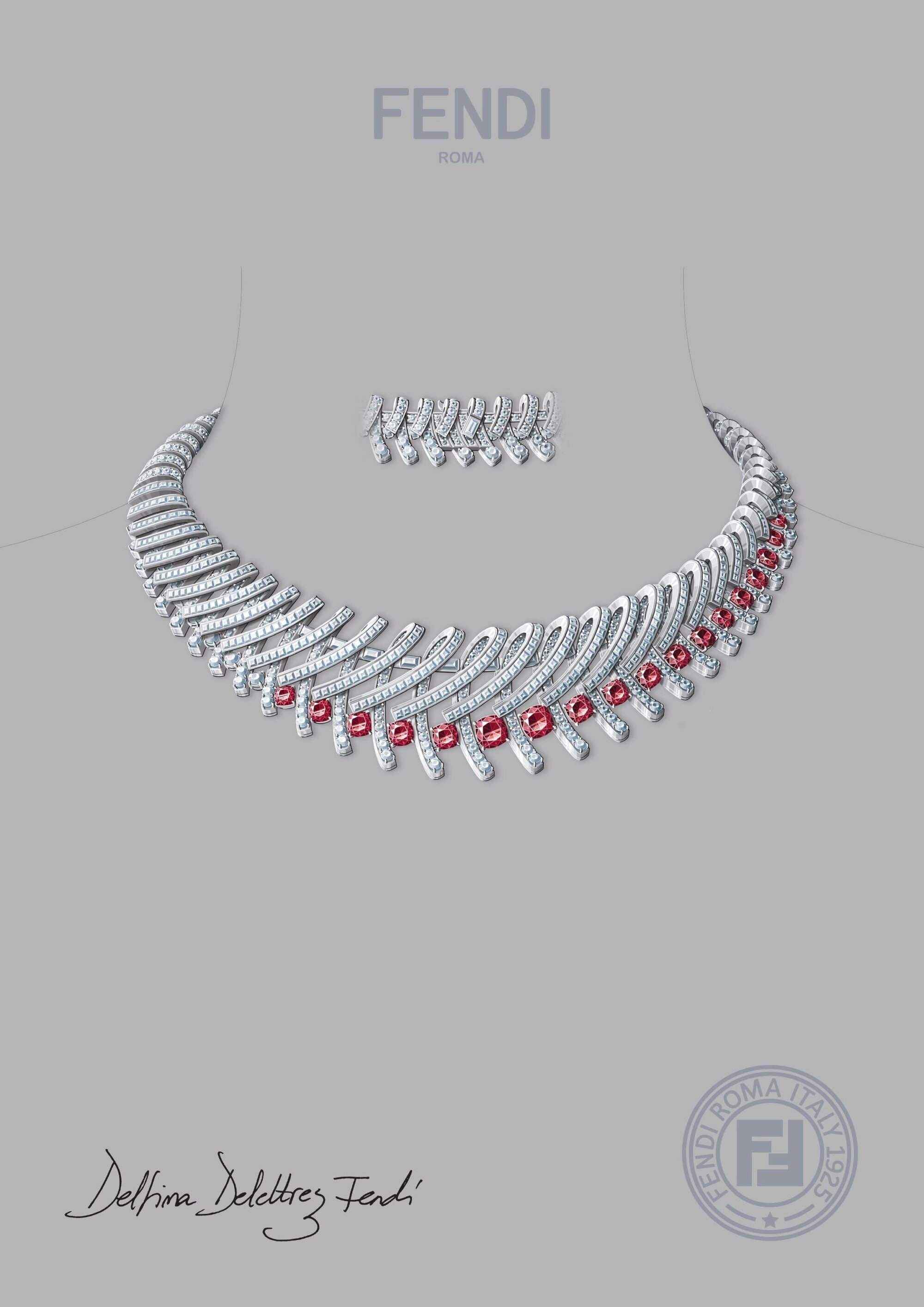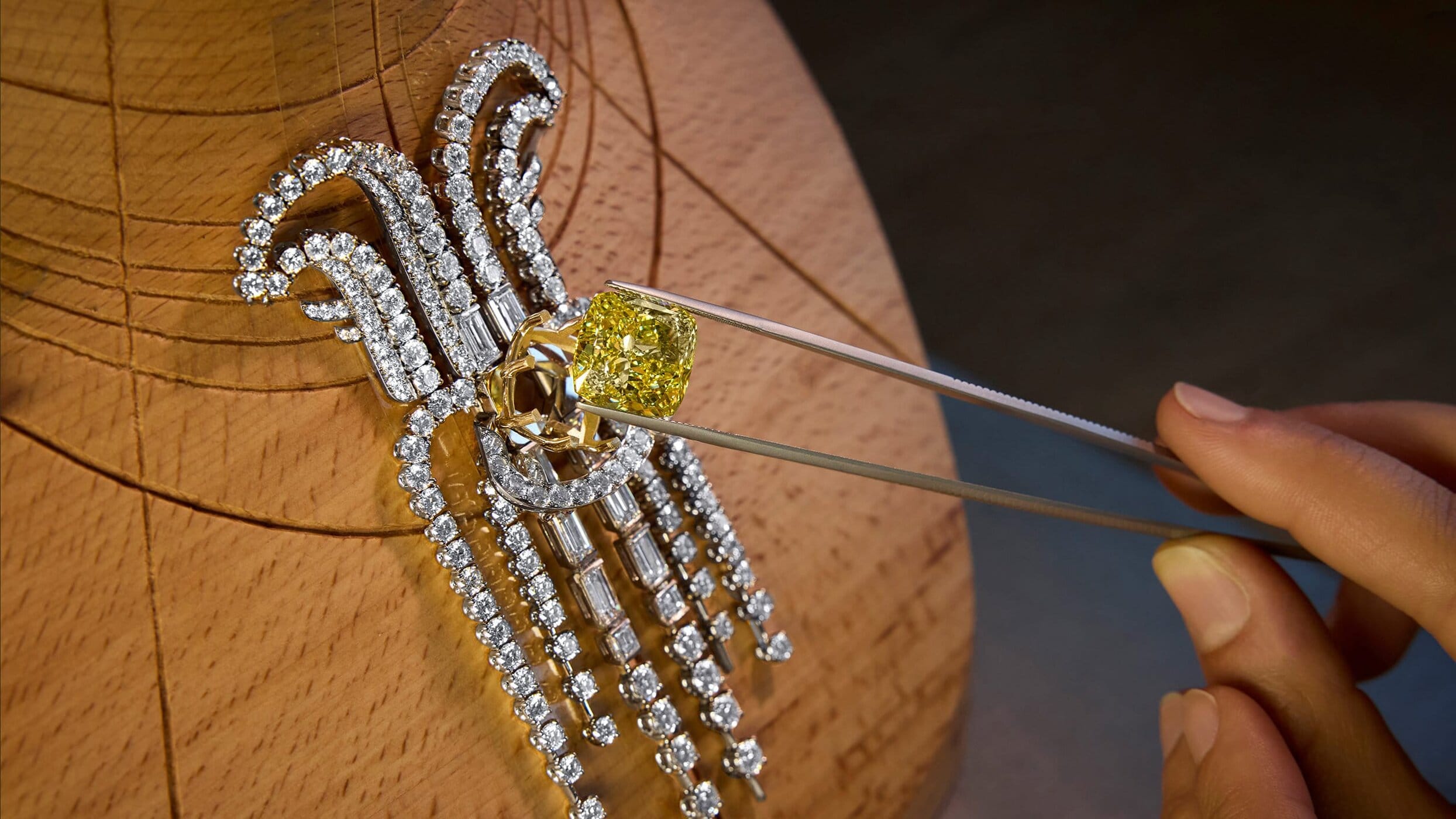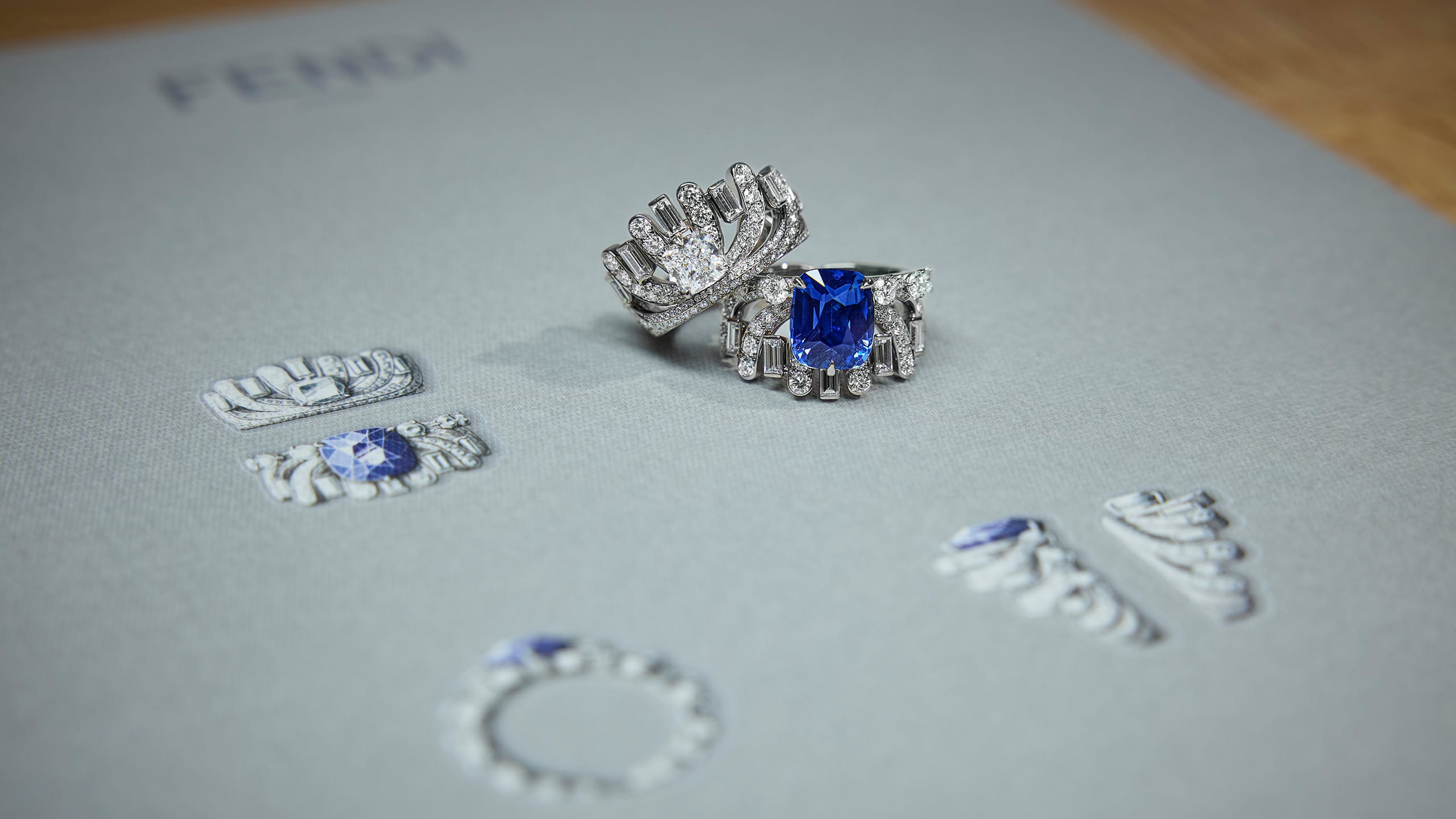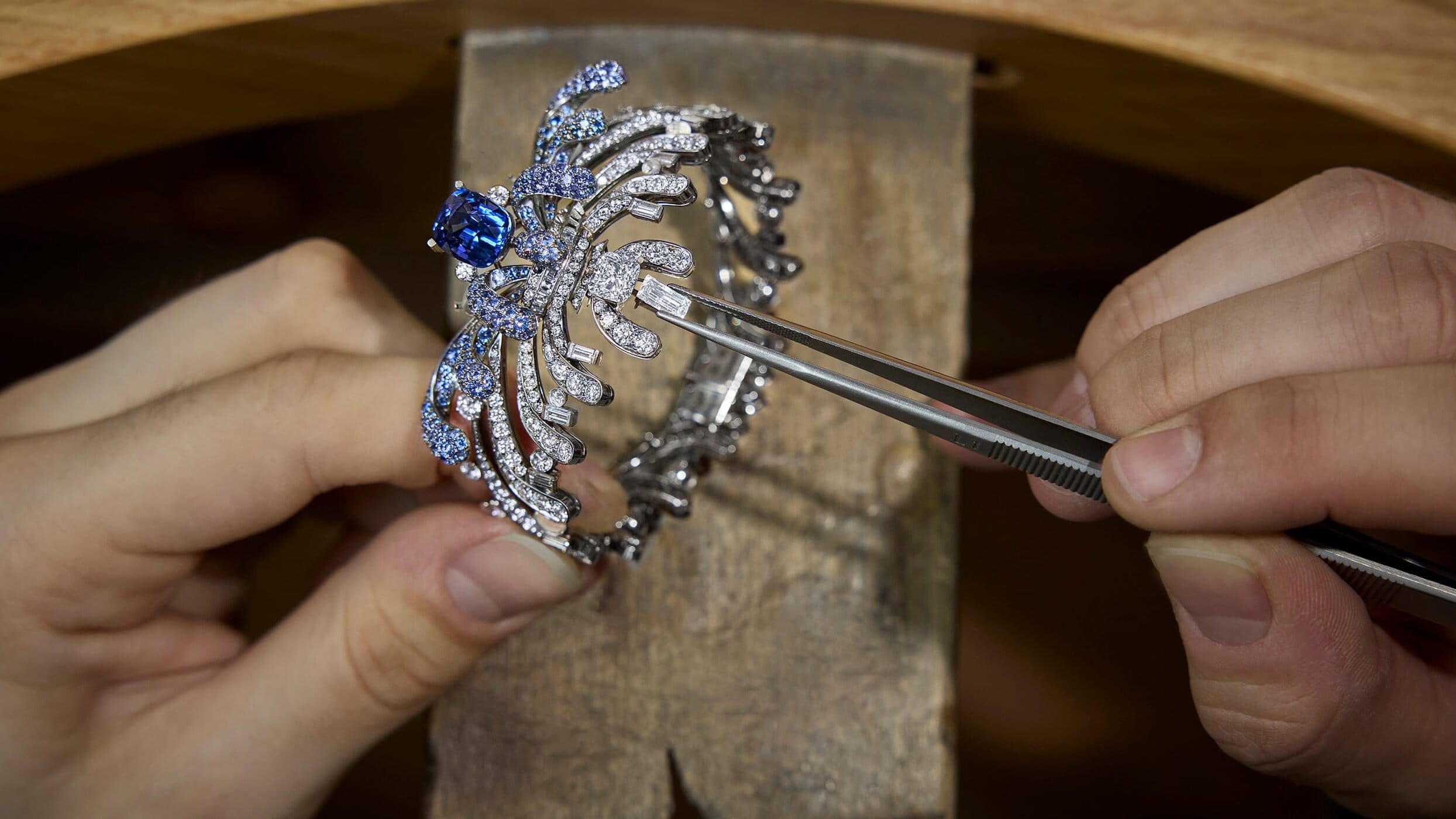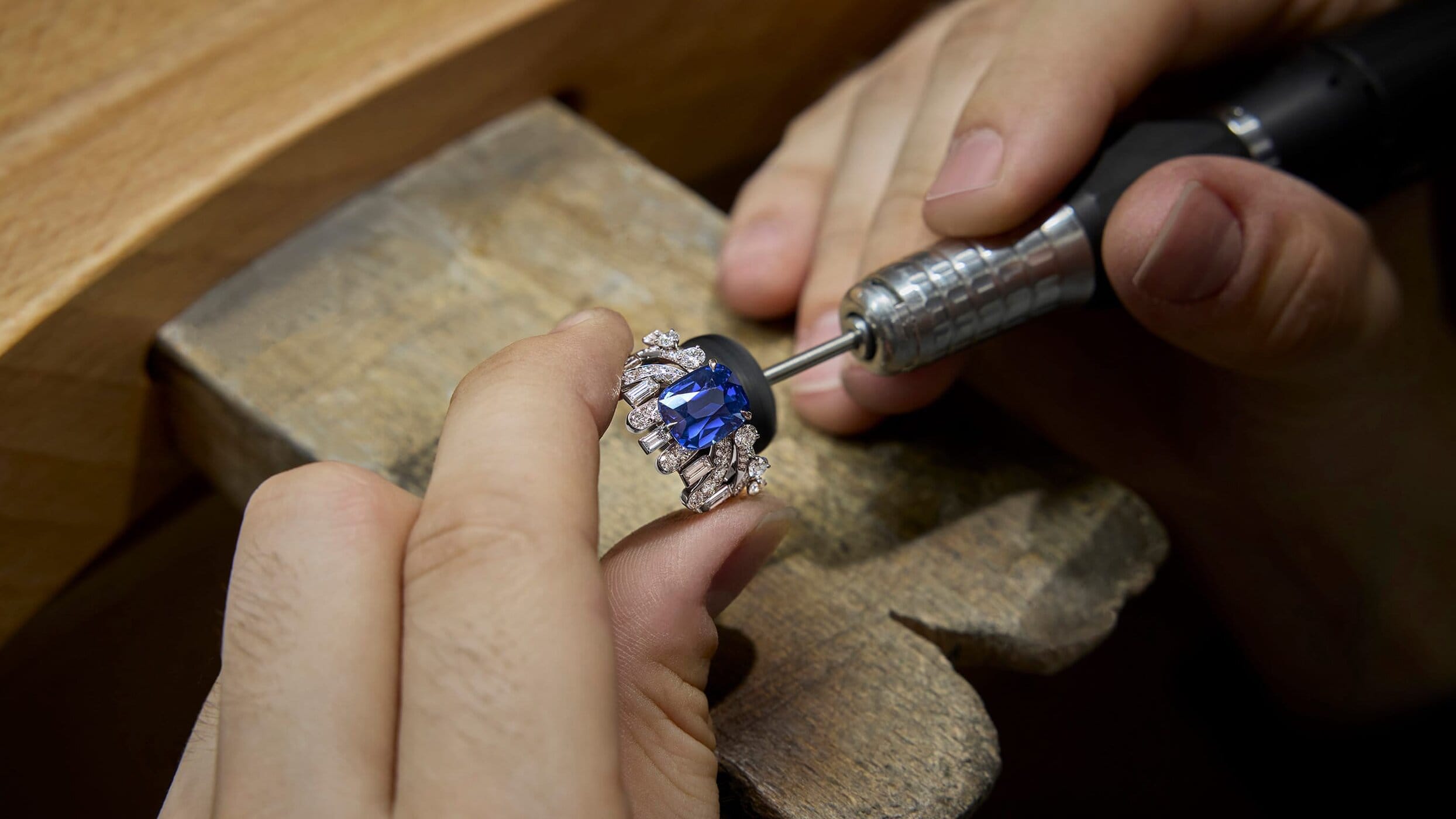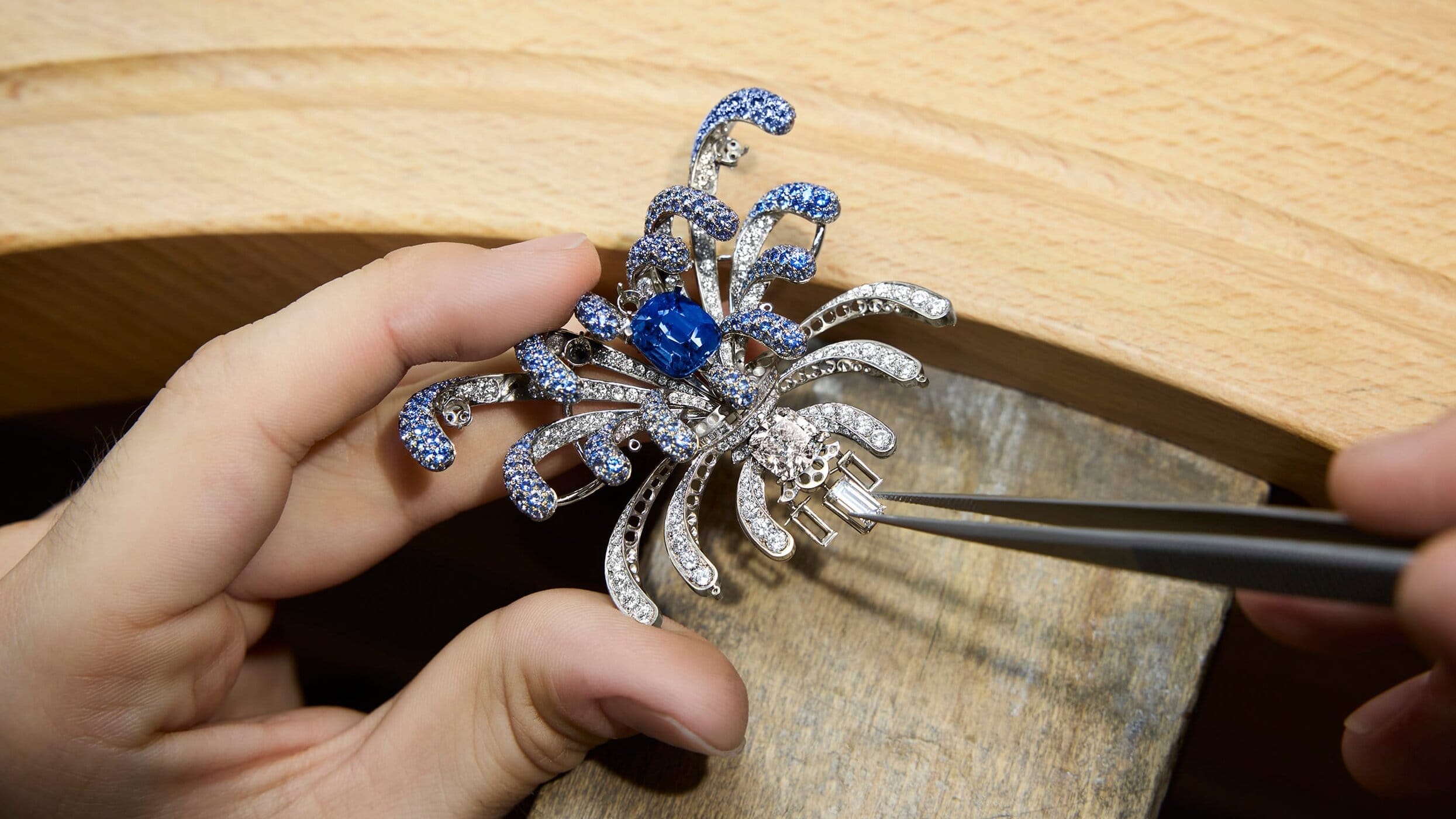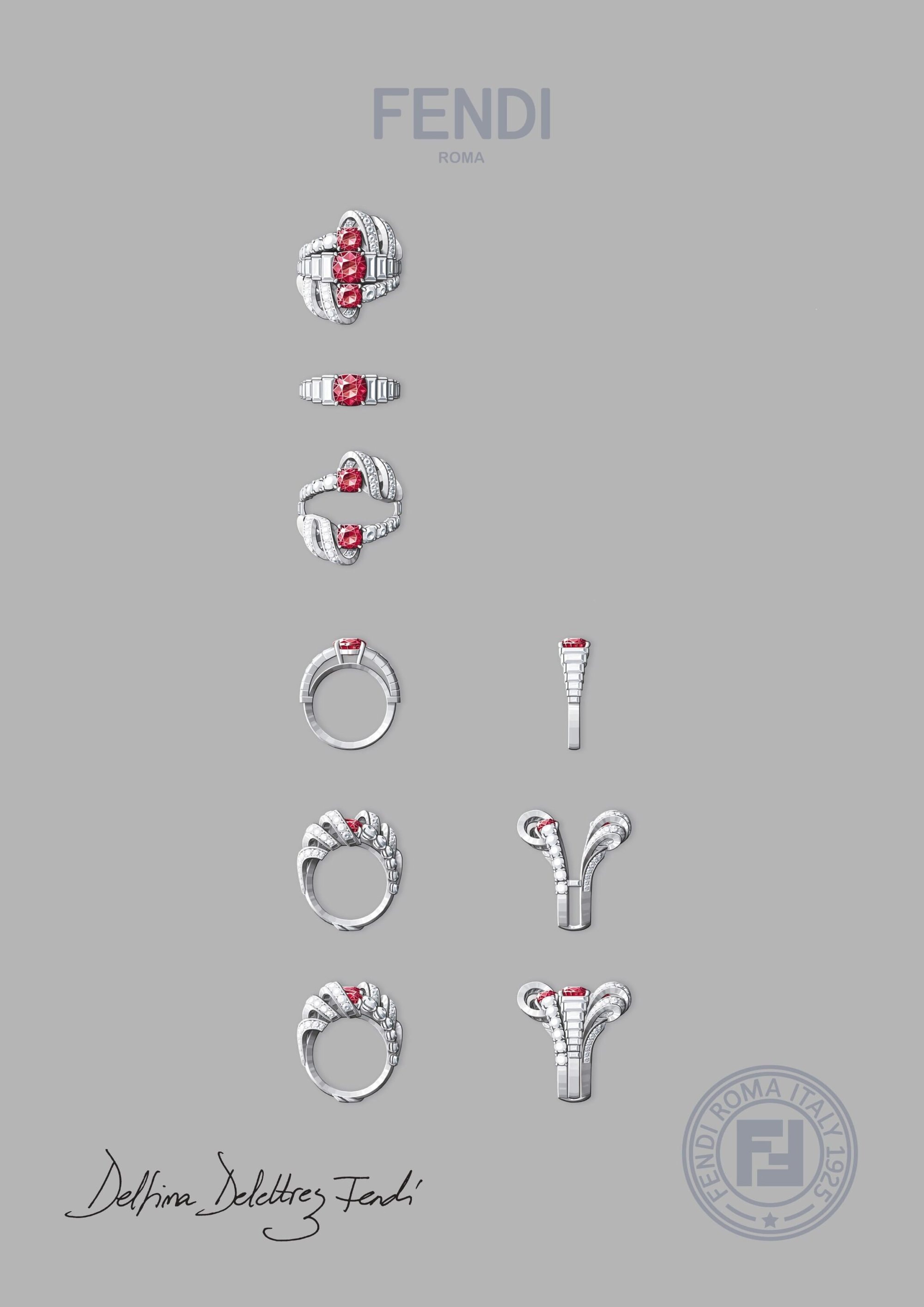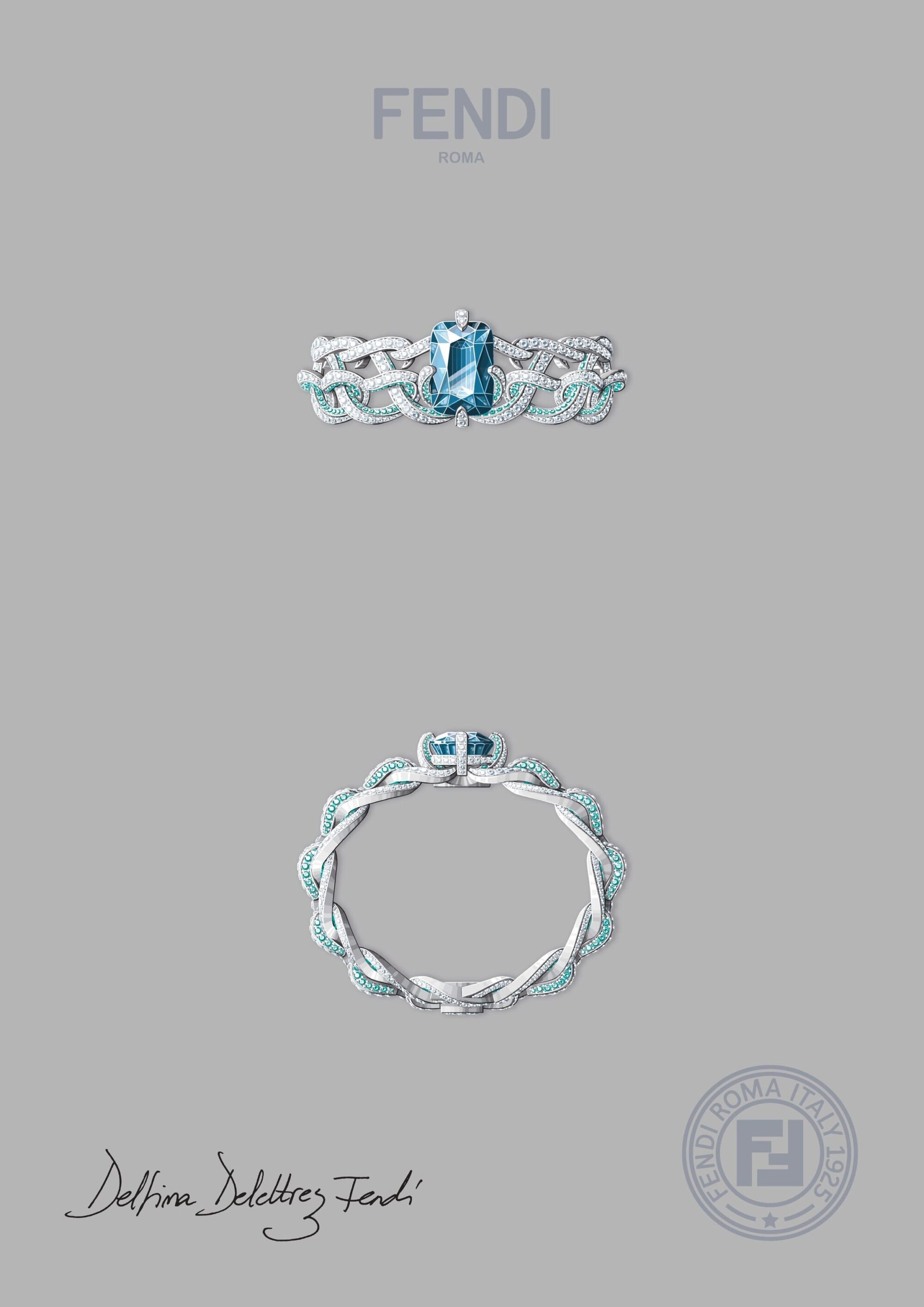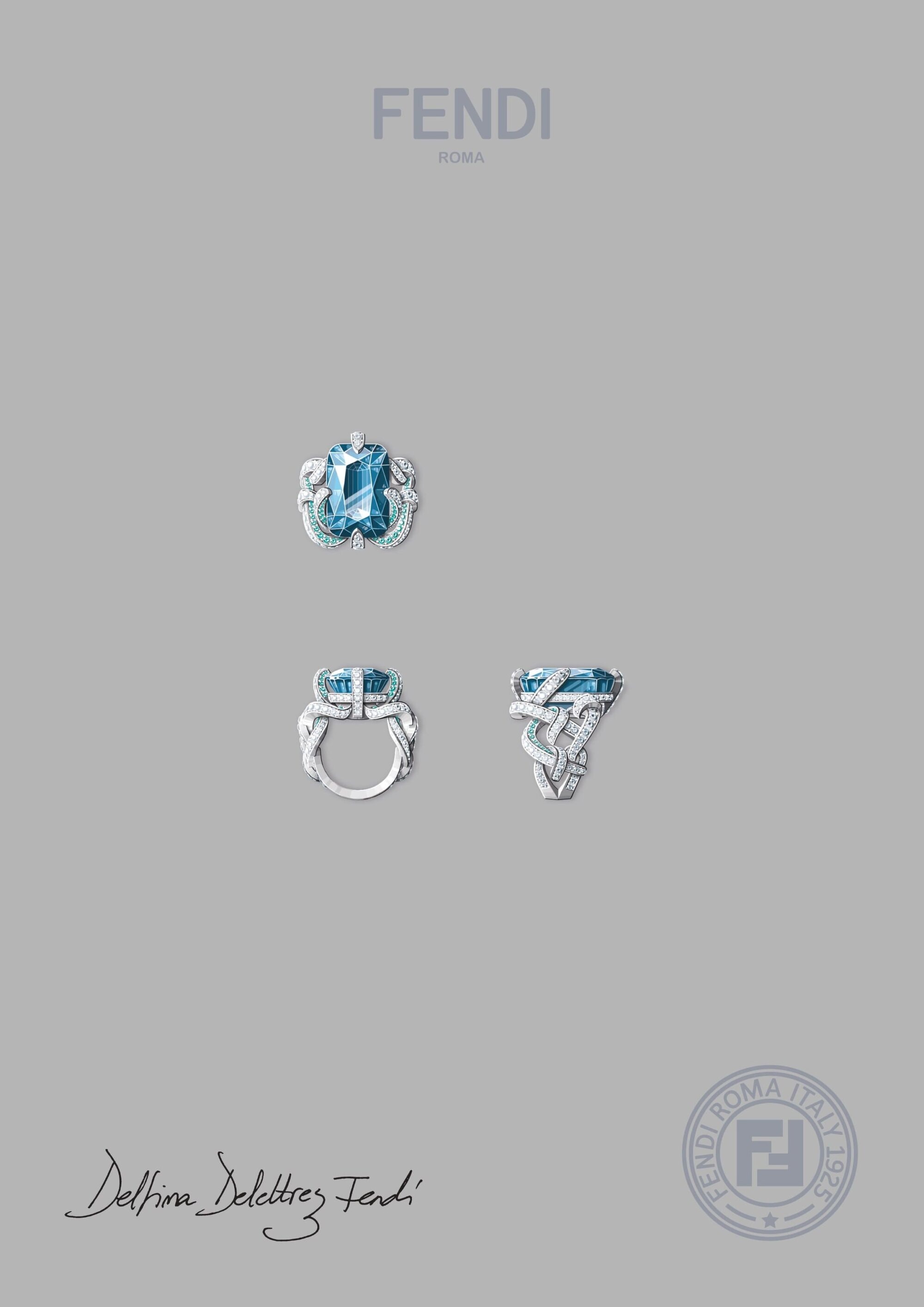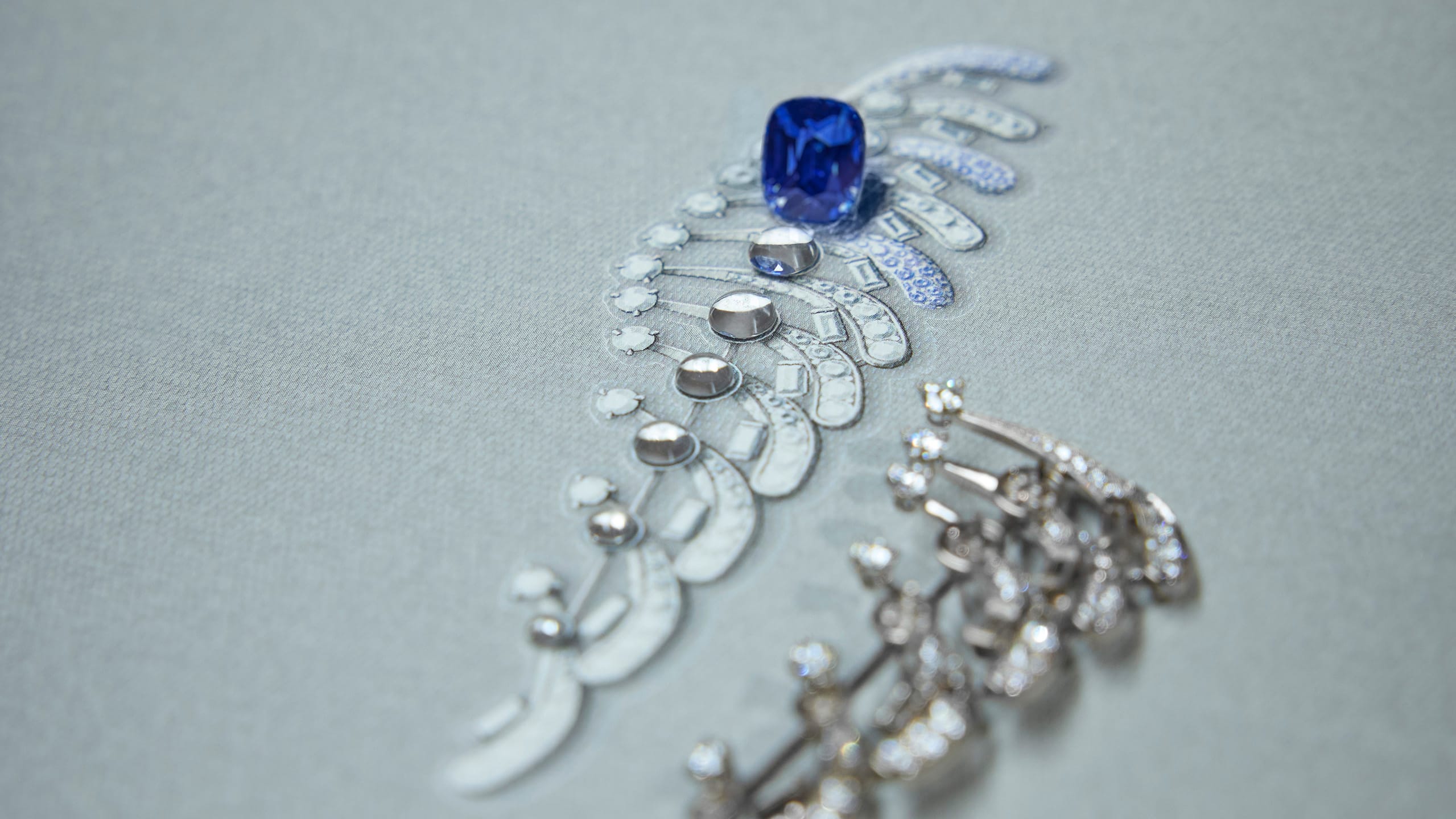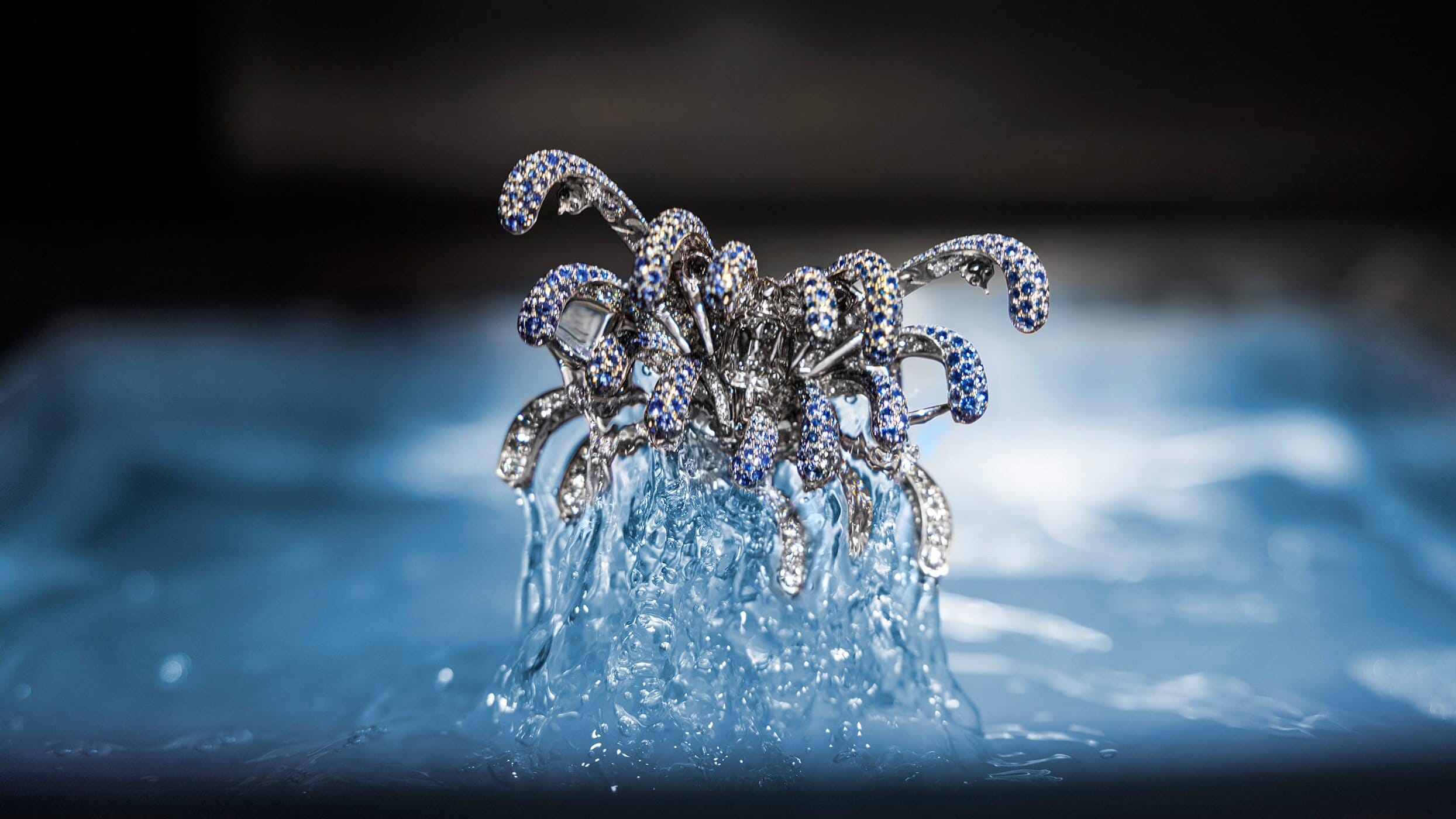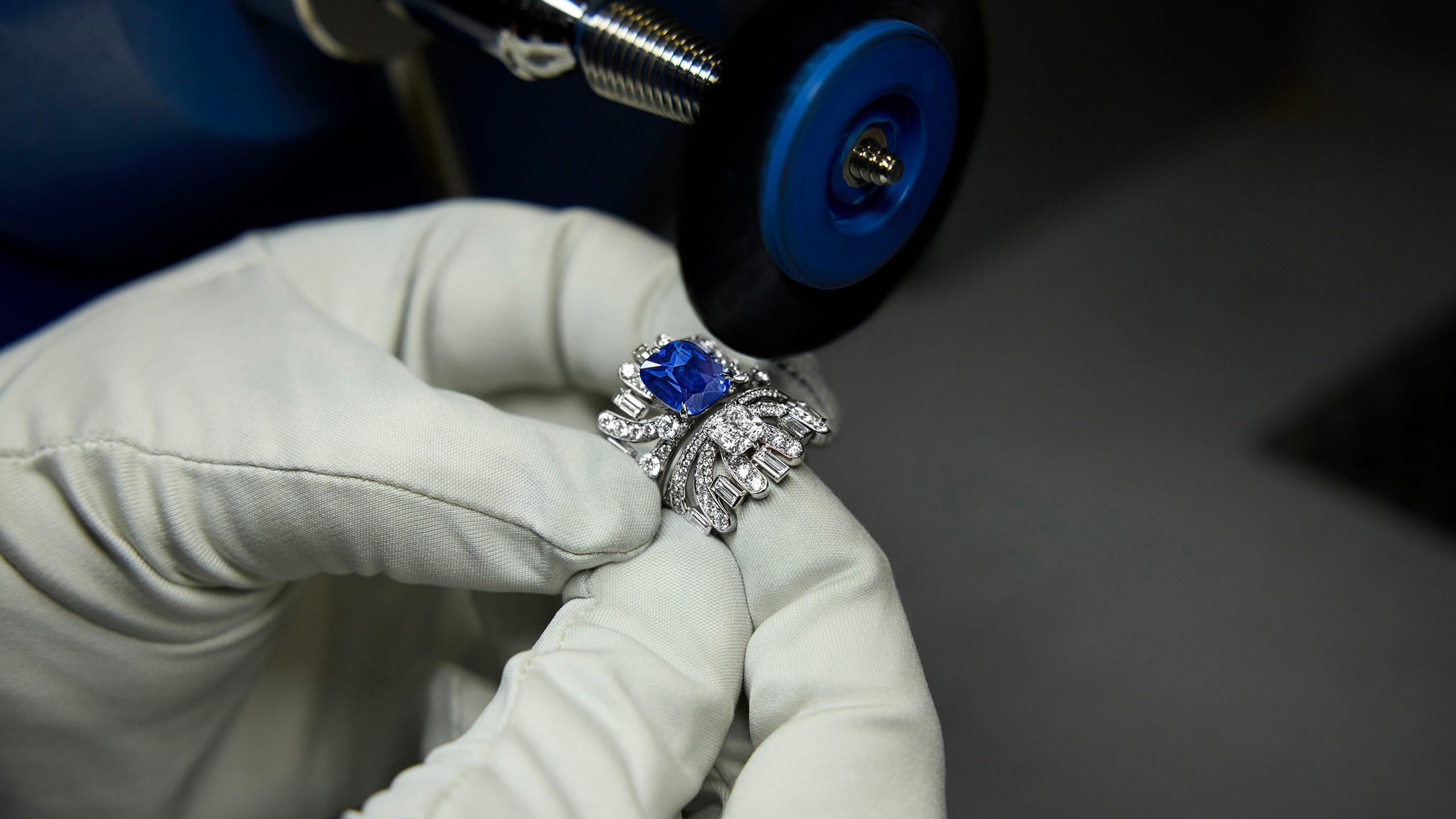Inspired by Villa d’Este, Delfina Delettrez Fendi’s high jewelry collection channels the feminine mystique of Kenneth Anger’s experimental film and the poetry of water for the centenary
At Villa d’Este, a 16th-century marvel of hydraulic design nestled just outside Rome, Fendi unveiled Eaux d’Artifice—its latest high jewelry collection marking the maison’s centenary. The collection is not simply a celebration of technical virtuosity but a meditation on duality, cinematic illusion, and the theatrical clarity of water. Designed by Delfina Delettrez Fendi, the house’s artistic director of jewelry, the 60-piece offering draws its title and emotional tone from Kenneth Anger’s 1954 experimental short film Eaux d’Artifice, in which a lone woman moves through the baroque fountains of the villa like a specter. That haunting, otherworldly visual became the creative axis for the collection.
While previous Fendi high jewelry launches have showcased Roman craftsmanship and architectural signatures, Eaux d’Artifice adds another layer: narrative cinema. Anger’s film, with its saturated shadows, mirrored corridors, and water bursting in symmetrical choreography, became a prism through which Delettrez Fendi viewed both personal memory and the symbolic weight of water. The jewelry itself channels that tension between fluidity and structure, femininity and force. Arcs of diamonds mimic spray and fall, while aquamarine and moonstone evoke pools of stillness. Firework-like formations reference celebration, but they remain exquisitely restrained, suggesting control rather than chaos.
The discipline of intention, not just inspiration, is embedded in the craftsmanship. Every piece is rooted in meticulous consideration, from engineering to gemstone selection. The 20.25-carat fancy vivid yellow diamond at the center of the Eaux d’Artifice anniversary necklace was not only chosen for its chromatic clarity and cut, but for its symbolism: its carat weight precisely reflects the milestone year of the house’s centenary. It’s the kind of quiet precision that resists spectacle and instead speaks in codes, rewarding attention rather than demanding it. Equally compelling was Delettrez Fendi’s departure from the overtly figurative in select pieces—a move that signaled both aesthetic confidence and conceptual depth. The Sunset rings, for instance, eschewed literal interpretations of nature in favor of fluid abstraction: large imperial topaz, yellow sapphire, and spinel center stones floated in sculptural whorls of gold, echoing the soft refracted light of dusk without replicating it. The Fortuna set pushed further still. Here, rubies traced the kinetic rhythm of water as its flow abstracted into a visual language that was emotional rather than illustrative. Across both, the palette absorbed colors not traditionally associated with water, instead drawing from sky, fire, and mineral, blurring elements that illuminate reflections of water’s fluidity.
This approach serves as a quiet assertion of Fendi’s evolving identity within the high jewelry landscape. While the house brings nearly a century of Roman heritage to bear, it remains a fresh perspective within high jewelry – an apparent tension that Delettrez Fendi leverages as a creative advantage rather than limitation. In embracing abstraction and elemental interplay, she forges a bridge between legacy and reinvention, anchoring the future of Fendi’s fine jewelry in a language that honors its past while evolving confidently beyond codes. By rooting her collection in the metaphor-rich imagery of Roman fountains, historically symbols of power, ingenuity, and continuity, Delettrez Fendi reinforces a deeply local, deeply personal identity for the house. It is no coincidence that the fountains of Rome have shaped her visual vocabulary since childhood. That continuity of reference, from marble sculpture to kinetic ornament, places Fendi’s high jewelry line not just within the realm of luxury but within a cultural lineage. Even the idea of “controlled fireworks,” which Delettrez has cited as a visual motif, echoes the very nature of the collection: composed extravagance of form.
In a market where high jewelry has increasingly become a proving ground for fashion houses expanding their luxury footprint, Fendi’s strategy feels unusually poetic. Eaux d’Artifice offers a tightly curated yet opulent collection grounded in Roman memory, cinematic allegory, and familial authorship. In doing so, it positions Fendi’s high jewelry not as a brand extension, but as a genre of its own—bridging the avant-garde and the eternal, the ornamental and the elemental. As the house turns 100, this collection doesn’t simply mark the moment. It defines the mood.
